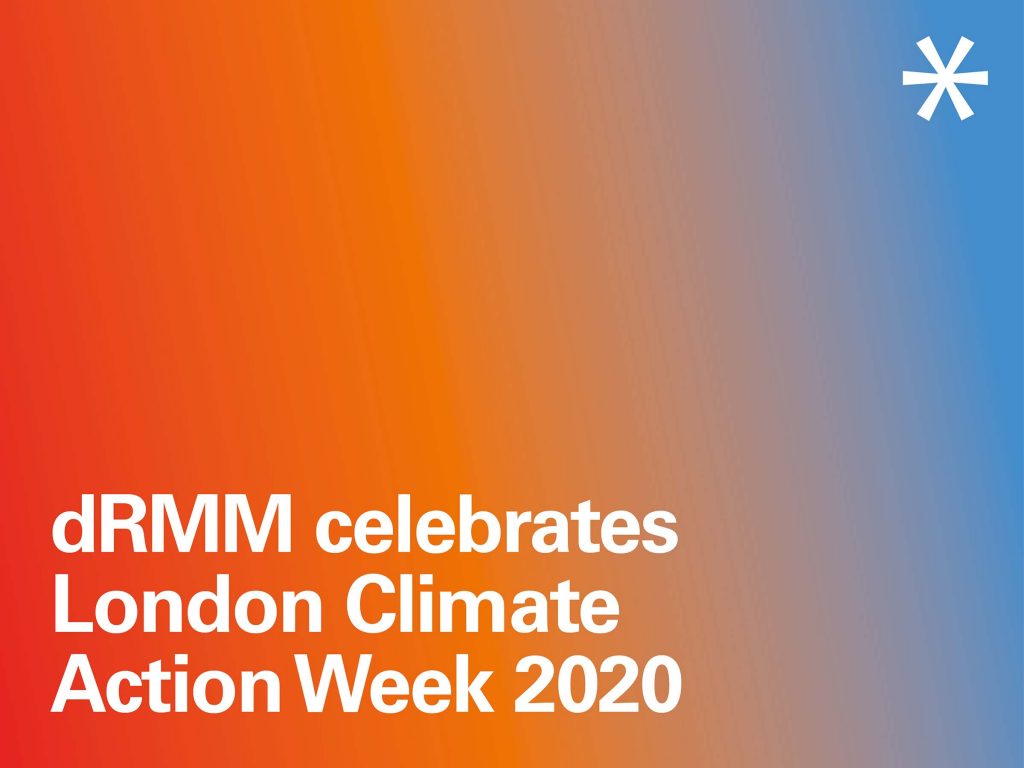Results [0]

Last month, dRMM celebrated London Climate Action Week (LCAW) – an annual event that aims to connect global climate professionals and communities in a bid to come together to find solutions to climate change.
The studio’s events over the week pulled into focus another hard work towards our long-standing sustainability goals. Throughout the week, the team organised internal knowledge sharing and brainstorming sessions around sustainability tools and guidance, as well as marking a year of climate action through participation in a series of sustainability events.
Focusing on regenerative design
Highlights included tuning into Max Fordham’s webinar on net-zero targets, discussing action around ambitious objectives for carbon neutrality by 2050. The event underscored dRMM’s commitment to designing regeneratively, which means designing buildings that can restore, renew or revitalise their own sources of energy and materials. This approach moves towards a goal of net zero and, ultimately, net positive design. Our commitment is characterised by an ongoing effort to recalibrate our design approach, understanding how we can address the whole-life impact buildings across their entire lifespans.
As part of our focus on regenerative design, we held a studio photo contest centred on the theme. Take a look at all the entries on our Instagram page.
Learning more about Passivhaus

The team was delighted to be digitally joined Thomas Lefevre, who spoke about his work on Passivhaus design and certification. Lefevre, who is a sustainability engineer with over 16 years’ experience in environmental engineering and sustainable design and construction, took the team through his ‘Passivhaus Easiguide’. This helped build our team’s growing knowledge around Passivhaus – a system that sets and helps achieve sustainable targets for heat and electrical energy consumption in buildings.
Launching an internal Climate & Biodiversity Practice Guide

dRMM has been working hard to build a living, practical and approachable studio Climate & Biodiversity Practice Guide. As part of LCAW, our team launched this internal guide around sustainable operational and design practice. The document helps each member of the dRMM team to: feel knowledgeable and empowered about our studio’s sustainability drivers; better communicate our sustainable design philosophy to clients and collaborators; and gain constant access to tools, definitions and case studies around sustainable, regenerative design.
Within the guide, we introduced a ‘sustainability asterix’ – a tool of acknowledgement and clarification that identifies the sustainability conversation as non-static and evolving. The asterix recognises both potential and complexities in the wider sustainability debate, working to name those complexities and outline our studio’s efforts to address them. We believe in communication, knowledge and collaboration as key players in our ambition to design more sustainably – dRMM’s climate & biodiversity practice guide embodies all three of these important values.
Remote action
London Climate Action represented a full and exciting year of climate action at dRMM – a year of internal and remote progress towards our ongoing sustainability goals. Our action has centred on three main streams of activity: event participation, advocacy, and strengthening internal sustainability guidance. Through this action, we have reinforced our knowledge, forged new collaborative ventures, and crystallised our goals for reducing our carbon impact through design.